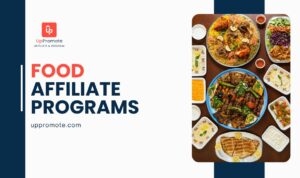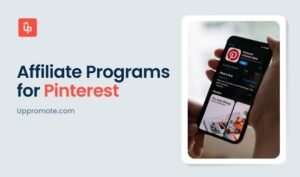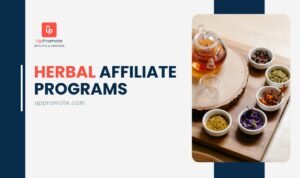You’ve decided to use affiliate marketing to give your sales a boost and grow brand awareness. But first, there’s an important choice to make—should you run the program yourself or use an affiliate network?
If you want full control over how everything works, an in-house affiliate program might be the better option.
In this article, we’ll walk you through the ins and outs of an in-house affiliate program—what it is, its pros and cons, real examples of brands using it, and key differences from an affiliate network.
We’ll also guide you through each step of creating your in-house affiliate marketing campaign. What’s the best part? It’s not as hard as you might think, especially with the help of affiliate marketing software.
Follow our 7 steps:
- Select the right affiliate marketing software
- Set a competitive commission structure
- Make a plan to recruit affiliates
- Write affiliate terms and conditions
- Train affiliate partners
- Provide ongoing support to affiliates
- Track and evaluate affiliate performance
To make managing an in-house affiliate program smooth and stress-free, having robust affiliate management software in hand is key. Check out UpPromote, the top-recommended affiliate marketing app on Shopify—trusted by experts and over 115,000 users around the world—to get started right away.
It takes less than 5 minutes to set up an in-house affiliate program with UpPromote – No prior experience is needed.
What is An In-house Affiliate Program?
An in-house affiliate marketing program is one that a business creates, runs, and manages independently using its own affiliate marketing tools, off-the-shelf affiliate marketing software, or built-in solutions—without relying on an affiliate network.
The company handles everything, including recruiting and vetting affiliates, setting commission structures, developing marketing materials, tracking affiliate performance, and managing affiliate relationships.
Pros of In-House Affiliate Programs
Running an affiliate program in-house is beneficial for business owners in several ways:
Full Control
When you create your own affiliate program, you control everything. You design the campaign, set commission structures, and choose how to work with affiliates. This lets you:
- Customize the program to match your business needs, goals, and brand image.
- Create flexible commission plans to attract different types of affiliates.
- Hand-pick the best-suit affiliate partners to work with.
- Communicate and pay affiliates directly to ensure transparency and build trust.
High Flexibility
An in-house program gives you the freedom to make changes whenever you need instead of relying on an affiliate marketing agency or network. This means you can:
- Adjust commission rates based on product categories or seasonal promotions.
- Tailor your affiliate signup form and recruitment process to find affiliates who match your brand values.
- Write your own affiliate program terms and conditions that publishers have to follow.
- Quickly update your affiliate program in real-time to keep it optimized.
- Tailor the features adapting to your particular needs—tracking sales, rewarding affiliates, or generating detailed reports. With UpPromote, you can do it all for free!
Cost-effective
If managing your affiliate program in-house, your costs often are a flat software fee and affiliate commissions on sales. Using UpPromote, you can start your own affiliate campaign with a free plan, so there’s no need to worry about upfront costs.
On the other hand, using an affiliate network often involves ongoing fees or revenue shares. Some may even take 20-30% of the revenue generated by your partners.
Data Ownership
Another key advantage of owning an affiliate program is retaining full ownership of all the data it generates. This includes details about affiliate performance, customer preferences, top-selling products, and other useful insights.
With this valuable information, you can make data-driven decisions to refine your affiliate marketing strategies, improve your program, and grow your business even further.
Foster Stronger Affiliate Relationships
Handling an in-house affiliate program means you are in charge of finding affiliates, inviting them to join your campaign, and working with them directly from day one. The opportunity enables you to build and nurture long-term partnerships with your affiliates in ways that suit your business, such as:
- Pick a preferred channel to look for and reach out to affiliates, for example, through email, social media, or events.
- Train your affiliates well to help them understand your products better and build a strong connection with your brand values.
- Offer personal support and guidance whenever your partners need it.
- Communicate regularly with your affiliates. Check-in with them, gather feedback, and discuss new promo ideas.
- Create a community for your affiliates to connect and share experiences.
- Provide extra bonuses to affiliates to keep them motivated and engage with your brand.
Real-world Examples of In-House Affiliate Programs
In fact, thousands of brands worldwide manage their affiliate programs in-house.
Here are a few examples:
Amazon
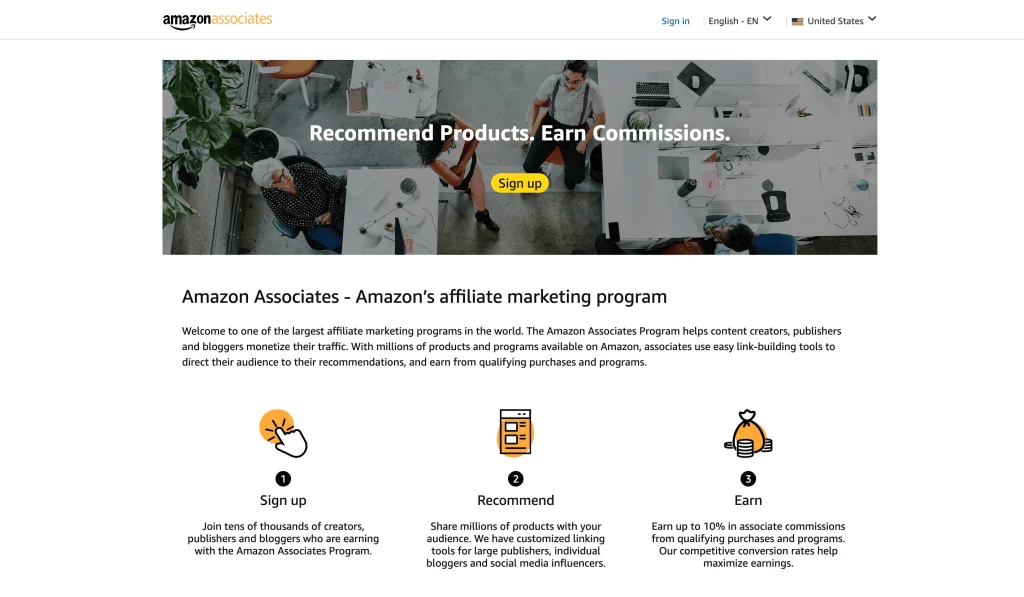
Amazon, founded by Jeff Bezos in 1994, started as an online bookstore in the U.S. Over time, it grew into “The Everything Store” and became a leader in e-commerce.
The titan jumped into affiliate marketing early. It launched its in-house program, Amazon Associates, in 1996.
With this type of affiliate program, Amazon keeps things flexible by offering commission rates that range from 4% to 10%, depending on the product category. In some cases, affiliates can earn up to 20%. Recently, Amazon even launched the Amazon Influencer Program for social media influencers. It lets influencers create Amazon storefronts and share product picks with their followers.
Now, Amazon works with over 900,000 affiliate partners worldwide. This massive promotional army has played a part in helping Amazon pull in $170.0 billion in net revenue during the fourth quarter of 2023.
TréSkin
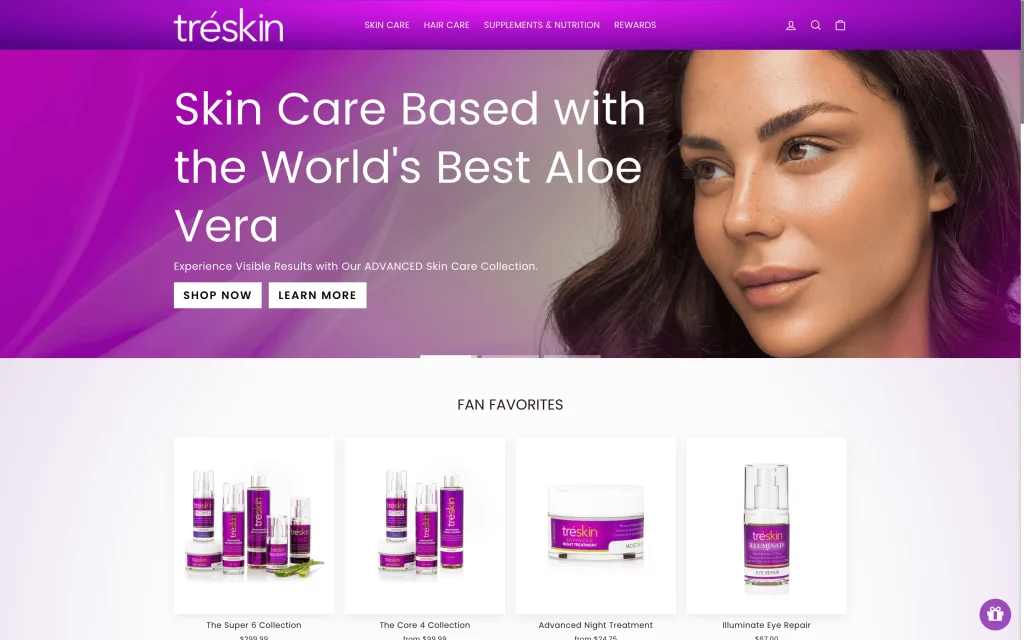
In-house affiliate programs aren’t just for big companies. Small and medium-sized businesses like Tréskin, an organic beauty and health brand in the USA, can run them as well.
Through UpPromote, the top-rated affiliate marketing app on Shopify, boasting a 4.9/5 rating and over 4,000 reviews, Tréskin creates and manages its own affiliate program with full control and high flexibility. This includes the ability to set commission rates, choose which affiliates to work with, and customize other key aspects of the program.
Specifically, the brand easily set a tiered commission structure, offering rates from 15% to 35%, making its campaign both competitive and attractive. This lucrative model has drawn some of the top affiliates in the beauty industry to Tréskin’s campaign.
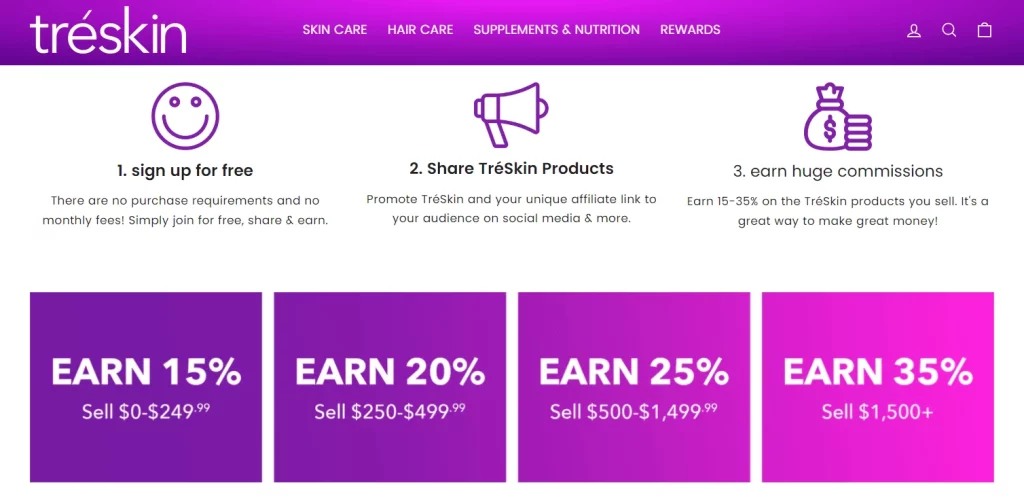
Beyond that, Tréskin leverages UpPromote Marketplace to discover and hand-pick leading beauty bloggers and influencers who match the brand’s values and products.
And the result? In just one quarter of running its in-house affiliate program with UpPromote, Tréskin generated over $120,000 in affiliate-driven revenue.
Join 115,000+ UpPromote users to customize an irresistible affiliate program that top affiliates won’t want to miss!
Hostinger
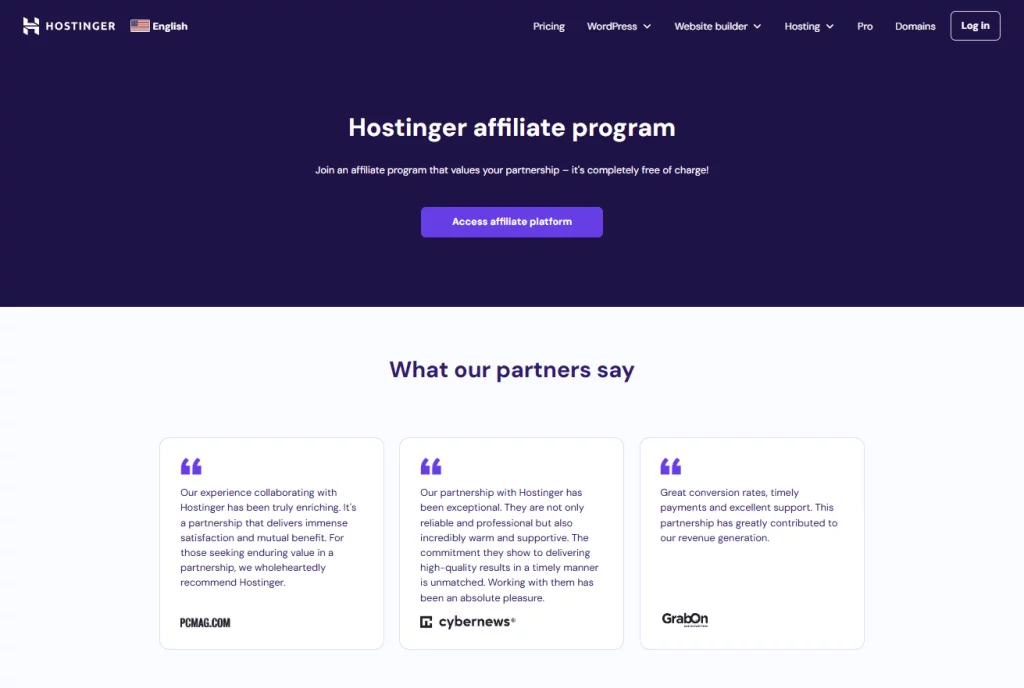
Founded in 2004, Hostinger is a top web host. It serves over 29 million customers in 178 countries.
Their in-house affiliate program is a great example of how to attract and engage affiliates. It has a simple sign-up process. Once approved, affiliates can access a dashboard to manage campaigns and track performance.
Hostinger pays up to 60% commission per sale. Affiliates can receive higher rates as they improve their performance. This model motivates affiliates to boost their efforts, driving growth for Hostinger.
Hostinger provides a one-stop hub with all the marketing materials affiliates need—including banners customized for different website types—so they can quickly grab what they need and start promoting the brand.
Grammarly
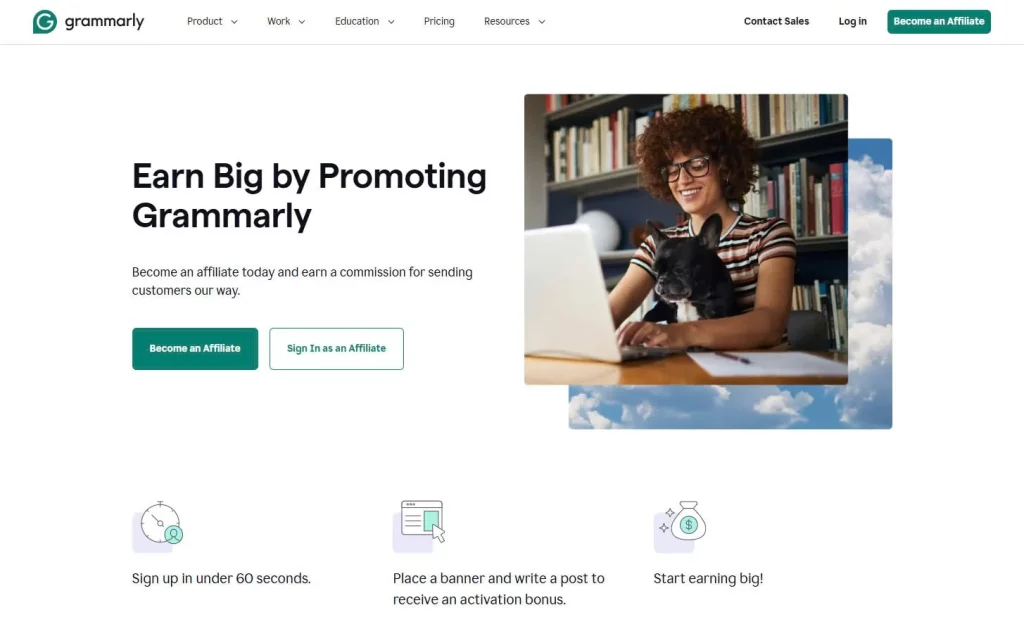
Grammarly is a leading AI-powered writing assistant trusted by millions worldwide. This popular brand also creates and manages an affiliate program itself.
With an in-house affiliate program, Grammarly has full control to tailor its structure and attract affiliates more effectively. For instance, the company instantly offers a $25 bonus for new sign-ups who write a promotional post featuring a Grammarly banner. It also provides flexible commission rates of 20–30% and sets a long cookie duration of up to 90 days.
Grammarly further supports its partners by providing ready-to-use marketing materials, including banners and ads, making it simple for affiliates to get started without delay.
Cons of In-House Affiliate Programs
Like a coin with two sides, running an in-house affiliate program also comes with some challenges.
Here are a few to keep in mind:
Require Initial Setup Cost
Starting your own affiliate program requires an investment in software and tools. This may include:
- Software development or purchase: You’ll need a specialized tool to track affiliate links, sales, commissions, and payouts. Creating custom software costs a lot. On the other hand, buying a ready-made solution often requires a large upfront payment.
- Hiring and training costs: Running an affiliate program needs dedicated staff. They recruit affiliates, offer support, track performance, process payments, and manage marketing materials. Bringing in and training these people adds to your initial costs.
- Legal and administrative fees: Additional expenses may involve consulting a legal expert to draft affiliate contracts for legal compliance (such as FTC disclosure requirements) and setting up payment processes.
Have Limited Reach
Compared to extensive affiliate networks, an in-house program may not reach as many potential affiliates. This means:
- You’ll need to search for and recruit affiliates yourself rather than having access to a large pool of affiliates instantly. It will take you time and effort to expand your own affiliate network.
- It might be harder to attract affiliates early on, especially when your program isn’t widely known yet.
Need Ongoing Management
Setting up your in-house program is just the beginning. It takes ongoing effort to keep things running smoothly and make adjustments when needed. Here are some key tasks to stay on top of:
- Continuously seek and recruit new affiliates. Train them and provide marketing resources.
- Maintain regular communication with affiliates, addressing their concerns and providing ongoing support.
- Track affiliate performance, identify top performers, and optimize campaigns for better outcomes.
- Accurately calculate commissions and ensure timely payments to affiliates.
- Implement measures to prevent and detect fraudulent activity within the program.
Demand Technical Expertise
Another challenge is the need for technical skills to set up and manage the program effectively. This could be:
- Setting up and maintaining the affiliate tracking software.
- Working with data and generating reports to spot top affiliates, identify trends, improve campaigns, and share updates with your business team.
- Implementing robust security measures to keep data safe and comply with data privacy regulations
In-house Affiliate Program vs Affiliate Networks: What’s the Difference
Running an affiliate program in-house is very different from using an affiliate network.
Here’s a table that breaks down the key differences:
| Aspect | In-house Affiliate Program | Affiliate Networks |
| Management and maintenance |
|
|
| Affiliate tracking solution |
|
|
| Costs |
|
|
| Control and flexibility |
|
|
| Reach and recruitment |
|
|
| Data ownership |
|
|
So, which one is right for your company?
It’s pretty hard to answer this question. Choosing between running an in-house affiliate program or using an affiliate network depends on your business strategy, goals, and budget.
Here’s what to consider:
- In-house affiliate program: Best for businesses that want complete control, build long-term relationships, and are ready to invest in tools and management.
- An affiliate network: Ideal for brands that need quick access to affiliates, prefer easier management, and are willing to pay extra fees for convenience.
7 Simple Steps to Create an In-house Affiliate Program
If you choose to create and run an in-house affiliate campaign, here are the essential steps you shouldn’t overlook:
1. Select the Right Affiliate Marketing Software
Picking the right affiliate management software is the first important step you need to take. It enables you to create, run, and manage your affiliate campaign with ease, reducing the need for manual work.
Some key points that you should focus on when looking for an affiliate tracking app could be:
- Ease of use and user-friendly interface
- Automated tracking and commission calculation
- Accurate report and analytics on affiliate performance
- Pricing and scalability
- Customer support and training
- Language and currency options
Looking for powerful software that checks all the boxes? UpPromote, the #1 affiliate management app on Shopify—trusted by experts and over 115,000 users worldwide—is a great choice to explore.
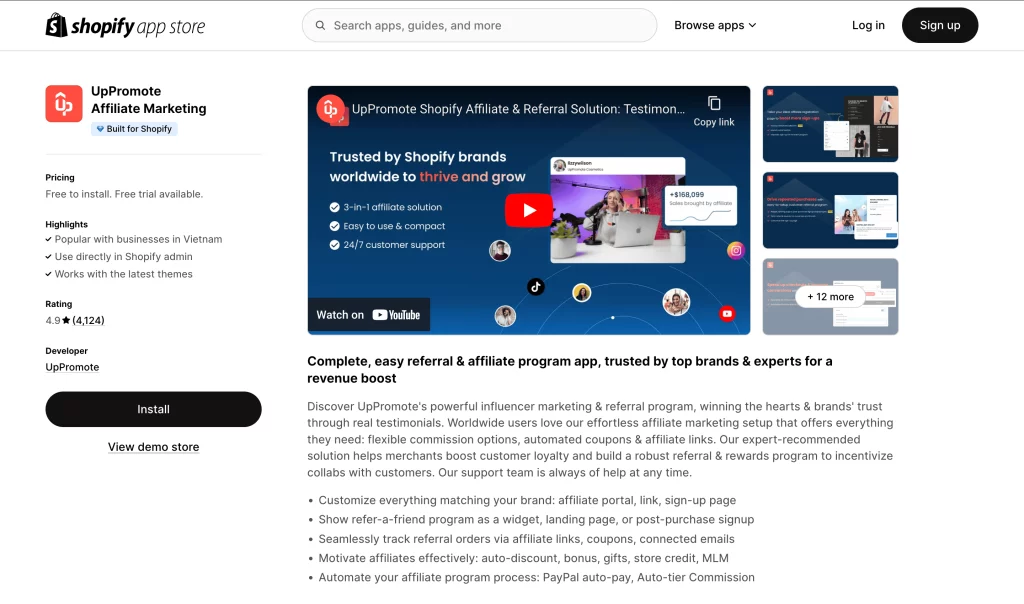
Here’s what UpPromote has to offer:
- Affordable and flexible pricing options, starting with a free plan, so you can get started without upfront costs.
- An intuitive interface with built-in tooltips to make navigation simple and stress-free.
- Fast and hassle-free setup to launch your affiliate program in no time.
- Accurate tracking methods with real-time reports & analytics to keep tabs on affiliate performance effectively.
- 24/7 dedicated customer support to help with setup and keep everything running smoothly.
2. Set A Competitive Commission Structure
Affiliate marketers won’t promote your products for free. They join your program to earn commissions. That’s why offering an attractive commission structure is key to attracting affiliates, especially the top ones.
Providing appealing and competitive commission rates, compared to rivals’ programs that attract the same types of affiliates, is one of the most effective affiliate marketing strategies. But make sure the commission you set is one you can afford to pay consistently and stay within your marketing budget.
You can analyze the average rates within your field before finalizing your decision. For example:
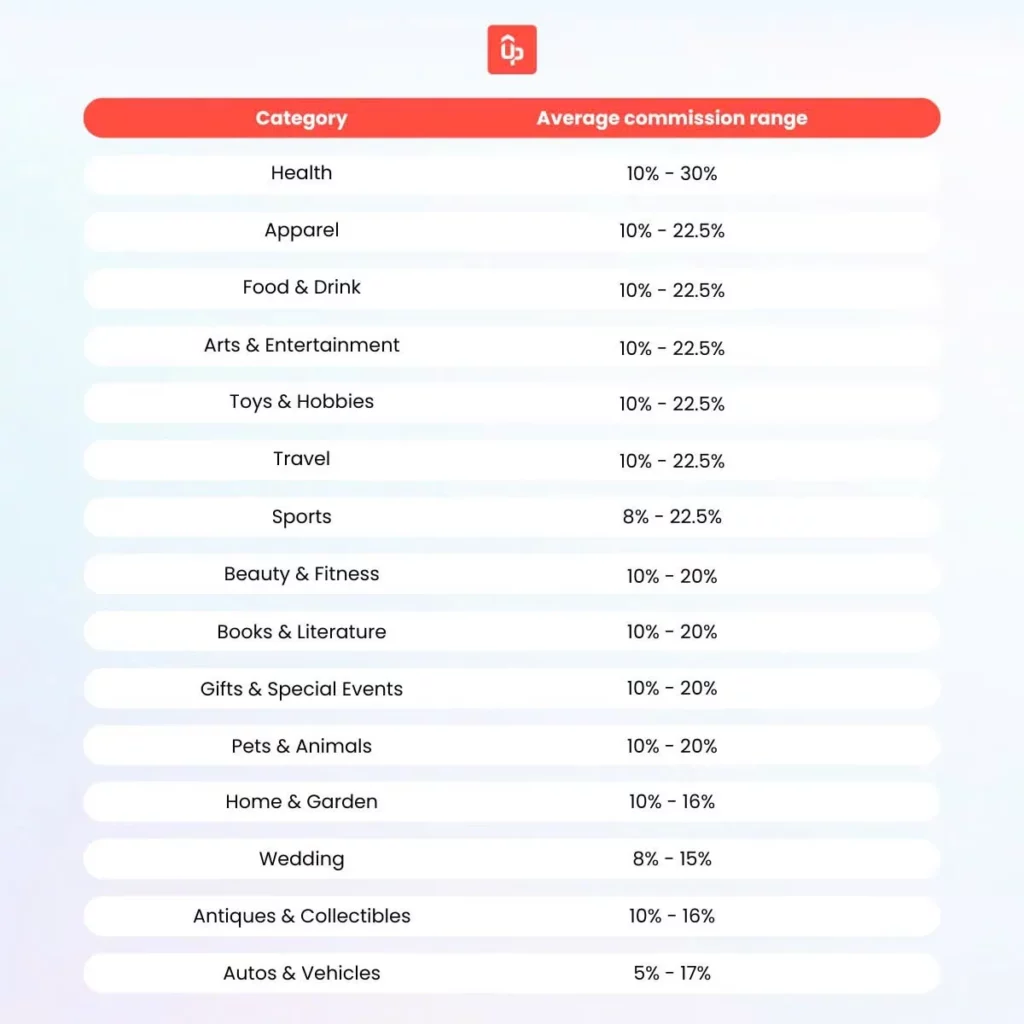
There are various ways to set an affiliate commission rate for your campaign:
- Percent of sale: Affiliates earn a percentage of their total sales, e.g., 10% of the total order amount.
- Flat rate per item: Affiliates get a set amount for each product sold, e.g., $10 per item.
- Flat rate per order: Affiliates receive a fixed amount for every referral order, e.g., $10 per order.
- Tiered commission: Affiliates earn more as they reach higher sales targets, e.g., 10% for sales under $700 and 20% for sales over $700.
Bonus tips:
- Decide on the affiliate cookie duration – how long affiliates can earn a commission after someone clicks their links and makes a purchase. Setting a good timeframe can make your program stand out.
- Match your commission structure to your goals. If you want to boost sales of specific products, a flat rate per item works well. To grow overall revenue, a higher percentage per sale or tiered commissions can motivate affiliates to sell more.
Render your dream rewards system with UpPromote’s smart commission settings to outshine your rivals.
3. Make A Plan to Recruit Affiliates
Finding the right affiliates to sell your products is the key to running a successful in-house affiliate program. But sometimes, it might be overwhelming, especially for business owners who are fresh to affiliate marketing.
There are many types of affiliates: your current customers, social media influencers, bloggers, video affiliates, podcasters, review sites, etc. Actually, what matters is knowing which ones will work best for your niche and program. When you know that, try the following to find them:
- Promote your affiliate signup page on your website and social media platforms. You can think about running ads to attract potential partners to sign up.
- Convert your satisfied customers into your brand advocates. Consider creating a refer-a-friend program to achieve just that.
- Search Google and social media (Instagram, LinkedIn, TikTok, etc.) using niche and product keywords. These methods can help you quickly find bloggers and influencers specific to your field.
- Participate in events and conferences associated with your industry or affiliate marketing (Affiliate Summit West/East, Affiliate Huddle, etc.). Such events bring great networking and a chance to connect with potential affiliates.
To recruit affiliates effectively, you should also focus on creating an outreach plan to invite them to your program. Here’s what you should think about:
- If you use email outreach, figuring out affiliates’ email addresses is necessary. You can visit their websites and check for the “Contact Us” or “About Us” pages. You can also look at their social media bios for hints like “Contact for work.” Remember to keep your message concise and highlight how the partnership benefits them.
- If you connect affiliates directly through social media, consider engaging them first. Follow their accounts and interact with their content (e.g., like, comment, or share) to catch their attention. Don’t forget to personalize your collaboration pitch when sending them a message.
- If you meet affiliates in person at events, plan how you’ll present your brand. Prepare materials like product samples, brochures, or media kits. Also, don’t forget to check event fees and set a budget accordingly.
4. Write Affiliate Terms and Conditions
When running an affiliate program in-house, it’s crucial to have clear and detailed terms and conditions. These would spell out what your business and your affiliates are responsible for. A well-defined agreement helps prevent misunderstandings and disputes down the road.
Keep these key points in mind:
- Program rules: Who can join, how to sign up, and affiliate duties.
- Marketing guidelines: How to promote products, what materials are provided, and banned activities like spamming or false ads.
- Commission structure: How commissions are calculated and paid.
- Referral tracking: How referrals are tracked, including cookie policies.
- Legal terms: Rules on confidentiality, ownership, and contract termination.
Bonus tips:
- Think about consulting a lawyer. This person will review your affiliate terms for legal compliance.
- Check how other brands, especially in your industry, write their affiliate agreements. For instance, if you run a beauty store, you might look at TréSkin’s affiliate terms and conditions as an example.
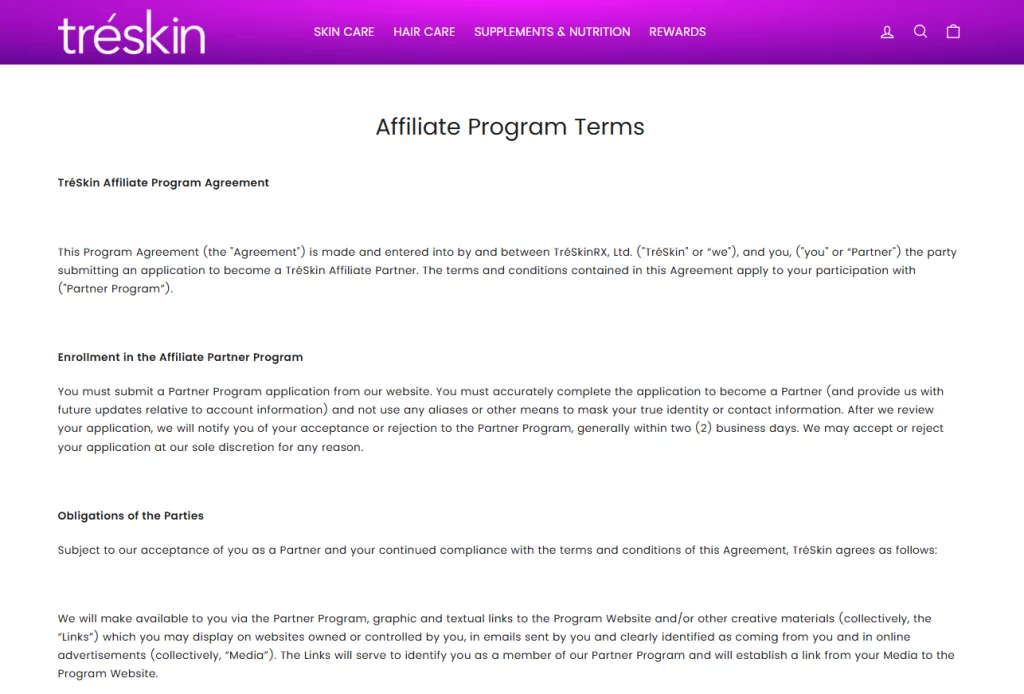
5. Train Affiliate Partners
A good training process helps your affiliate program run smoothly. Through it, your partners understand the rules, your products, and your brand values so they can promote your business better.
Here’s how to plan your training:
- Put together a training kit. Include key details about your products, branding, commissions, and marketing materials.
- Give step-by-step instructions. Show affiliates how to use the dashboard, track earnings, and find promotional tools.
- Pick the proper training format. This could be emails, online courses, live webinars, or video tutorials.
Using UpPromote, you can easily share training materials with affiliates from day one. Upload guides, videos, or announcements through the Guide page. Affiliates can access all the info they need right in their dashboard after joining your program.
 6. Provide Ongoing Support to Affiliates
6. Provide Ongoing Support to Affiliates
Providing dedicated support to your publishers is a great way to encourage them to promote your brand better. Here are some things you can do:
- Be available to answer any questions they have about your program or products.
- Give personalized feedback to affiliates. Highlight their strengths and suggest ways to improve.
- Stay in touch regularly through emails, calls, or messages to check affiliate’s work. Offer help, especially if they seem less active.
- Share helpful tips and resources via webinars, tutorials, or email updates on affiliate marketing strategies and industry trends.
- Offer pre-made marketing materials like banners, email templates, social media posts, and product images to make their promotions easier.
With UpPromote, you can upload unlimited media files—images, links, videos, and more—into the Media Gallery. Organize them into categories so affiliates can quickly find and download what they need after logging in.
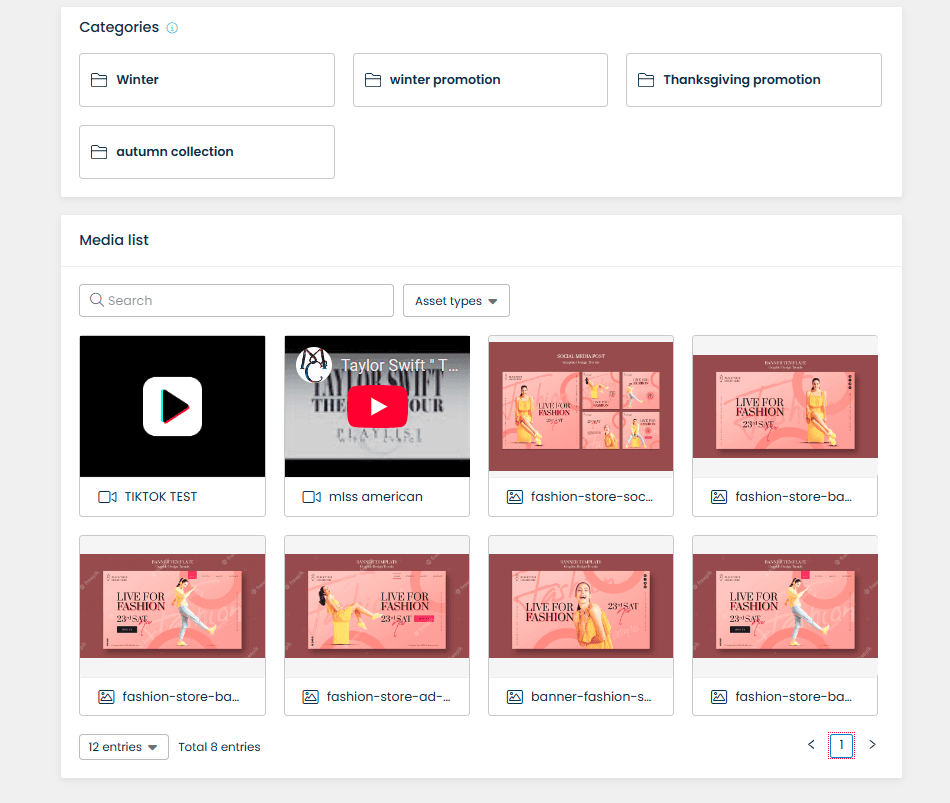
7. Track and Evaluate Affiliate Performance
Another essential task when running an affiliate program yourself is to track and evaluate your affiliate performance continuously.
To assess your campaign’s effectiveness, you can:
- Look at your goals and KPIs to see if your affiliates meet expectations.
- Use a reliable affiliate tracking tool to get real-time data and detailed reports on how your affiliates are performing.
With UpPromote, you can easily track the progress of your affiliate program. Our app allows you to monitor key metrics like the total affiliates, orders, sales, clicks, and commissions. All the data is shown in easy-to-read graphs, so you can quickly see what’s working and what needs improvement.
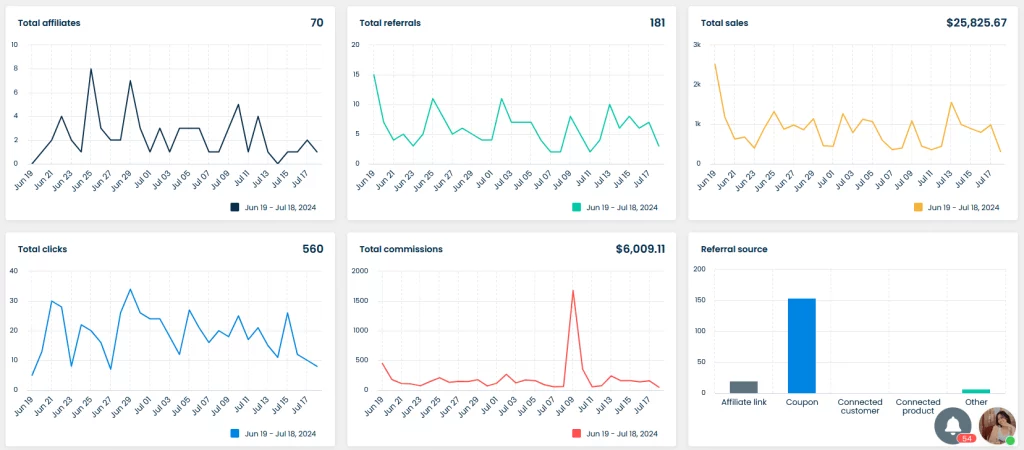
Based on accurate data, you can make smarter decisions to improve your campaign:
- Reach out to affiliates who aren’t meeting their goals and offer help if needed.
- Adjust rewards and bonuses to keep top-performing affiliates motivated.
- Try different commission types or rates to find what drives better results.
Final Words
Running an in-house affiliate program is very different from using an affiliate network.
Even though an in-house affiliate campaign does require some setup cost in the beginning, finding affiliates yourself, and then the effort in tracking and optimizing, it gives you the freedom and flexibility to customize whatever is in your way.
You get to hand-pick those affiliates that best match your brand values and audience. Meanwhile, you also have complete control over the data and analytics regarding your program.
Setting up an in-house affiliate campaign is much easier than you might think—especially if you choose the right affiliate tracking software. We truly hope this detailed guide can empower you to build and go live with your own affiliate program.


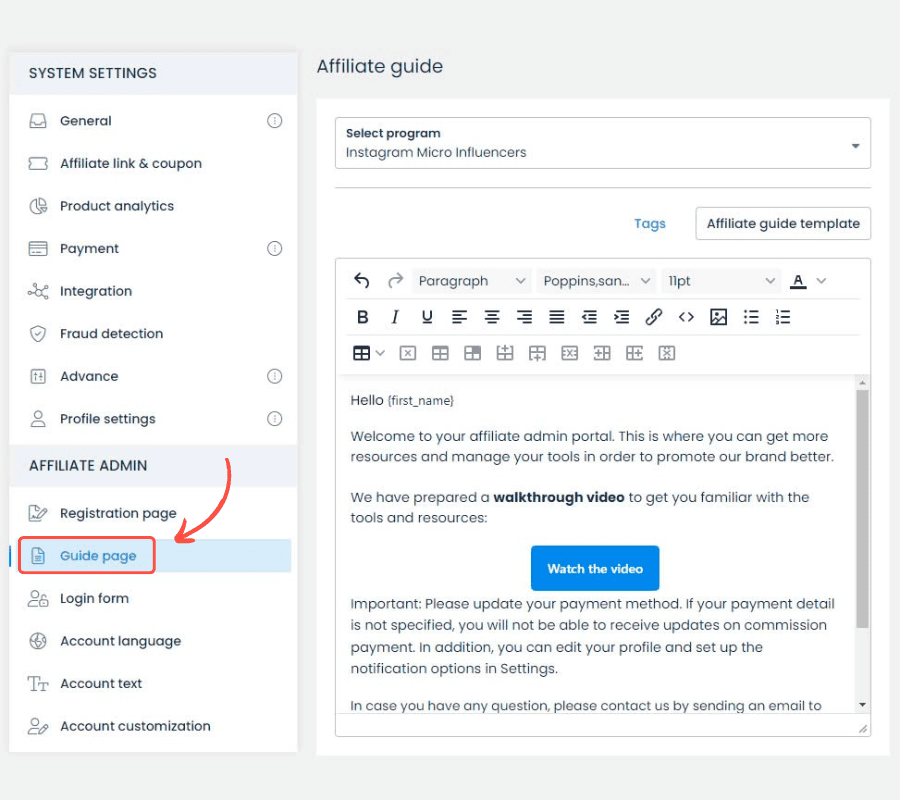 6. Provide Ongoing Support to Affiliates
6. Provide Ongoing Support to Affiliates